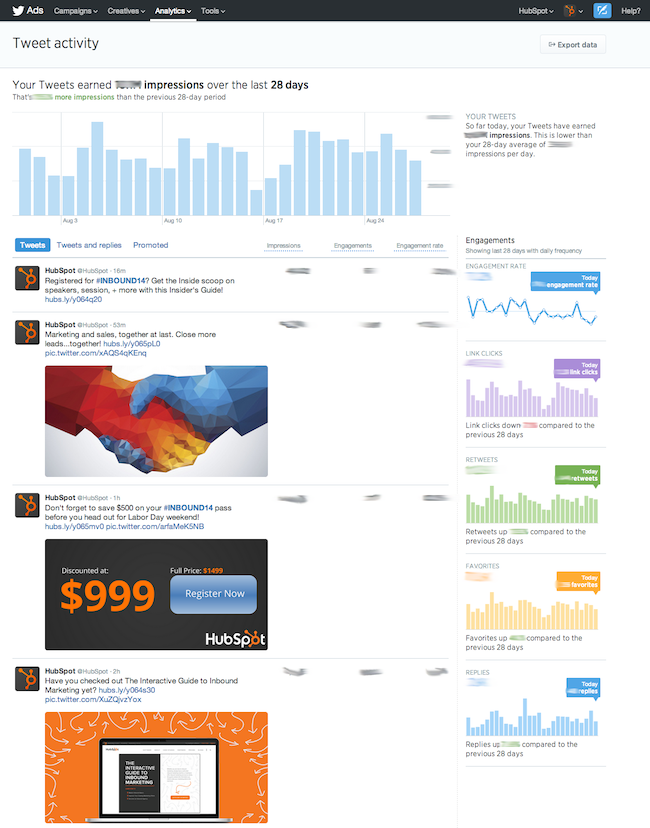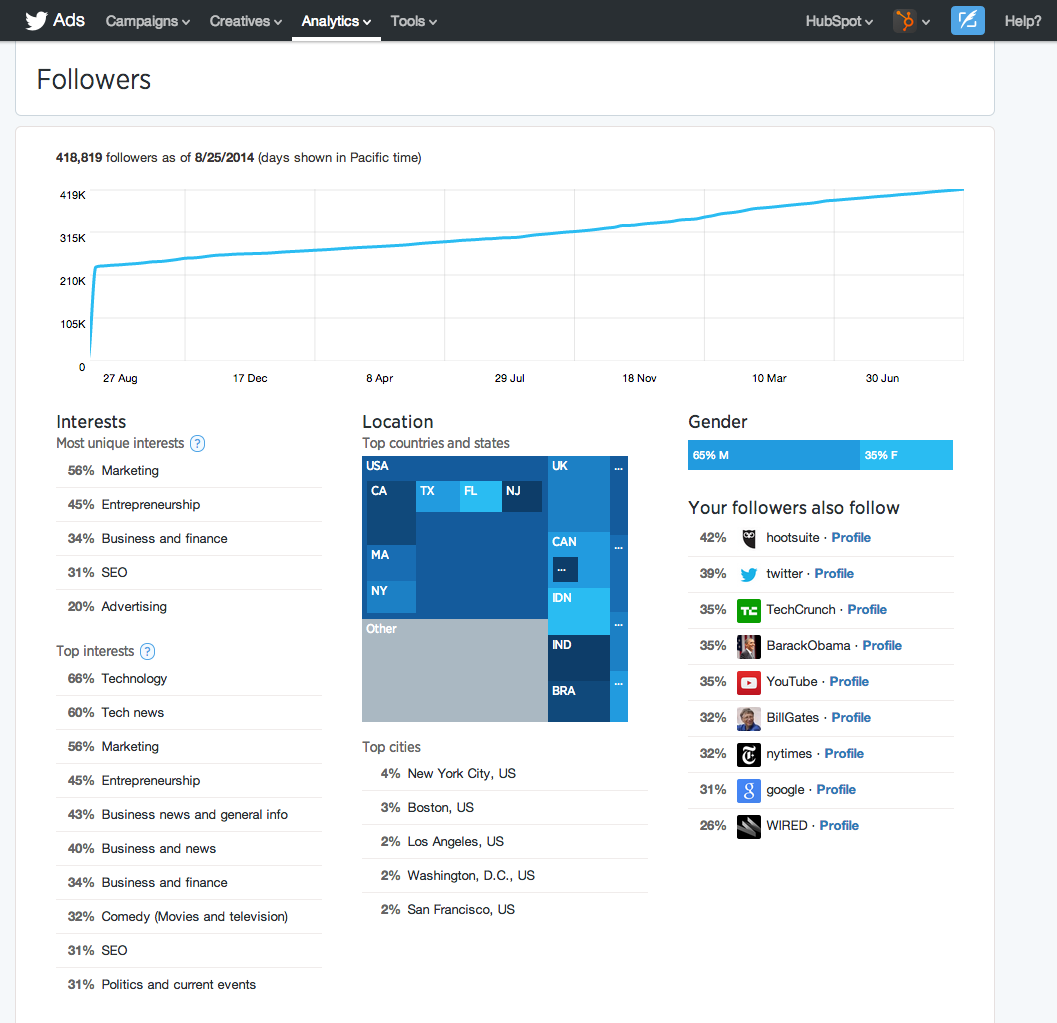 Back in July, Twitter rolled out early access to its new analytics dashboard to select advertisers and verified users — and left the rest of us wondering whether we’d be able to access our own Twitter analytics dashboards, too.
Back in July, Twitter rolled out early access to its new analytics dashboard to select advertisers and verified users — and left the rest of us wondering whether we’d be able to access our own Twitter analytics dashboards, too.
Well folks, it looks like the day has finally come. According to TechCrunch (and a tweet from Twitter’s front-end engineer Ian Chan), now everyone can see their Twitter analytics. Here you go: The newly unlocked activity dashboard.
I can already hear marketers everywhere rejoicing. Here are the deets about who has access, what you get, and why it’s useful to us marketing folk.
Who Has Access?
According to Twitter’s support page, the dashboard is now open to every account that’s been open for at least 14 days, isn’t restricted, protected, or suspended, and primarily publishes tweets in English, French, Japanese, or Spanish.
What Do You Get?
You can choose from three options: Timeline activity, Followers, or Twitter Cards. Let’s see what happens when I click Timeline activity for HubSpot’s account.
Timeline Activity

As you can see, the dashboard gives me a summary of total impressions in the last month near the top, which Twitter compares to my last month’s performance.
In the columns of data provided, I can see the number of favorites, retweets, and replies generated from each individual tweet, in addition to click data for any links included in my tweets. On the right-hand side of the screen, I can see how my engagements, link clicks, retweets, favorites, and replies have been trending over the last 28 days.
I can even export this data into an Excel file by simply clicking Export data at the top right.

The export includes the tweet copy along with the number of favorites, retweets, replies, link clicks, hashtag clicks, detail expands, embedded media clicks, user profile clicks, and follows.
Good stuff! Now let’s see what happens when I look at Followers.
Followers

Jackpot!
This dashboard shows our follower growth over time, highlights our followers’ most unique and top interests, the distribution of their locations and gender, and the top-most followed people our followers also follow. (I’ll give you a second to wrap your head around that last part.)
Twitter Cards
This is a third option you can grab that lets you attach media experiences to tweets that link to your content. Most of you likely don’t have it set up. Click here to learn more about Twitter Cards, and here to learn how to set them up. Once you have them up and running, check out this article for help with analyzing their effectiveness.
Why Twitter Analytics Are Helpful
Because when are free analytics not helpful? Being able to analyze the performance of your tweets can provide a wealth of knowledge and insight into the effectiveness of your Twitter strategy.
By exporting your data, you can sort and analyze which tweets are your best performers. Which means if you were trying to expand your reach on Twitter, there are probably some lessons you could learn from those most retweeted tweets. What should you replicate? What didn’t work? Or, if you wanted to increase the engagement of your tweets, you could analyze which tweets generated the most replies and extract some insight from the content of those tweets. More data leads to better insights, which leads to smarter, more effective marketing.
Not sure where to start? Think about the following as you analyze the performance of your tweets:
- How does timing (both time of day and day of the week) influence the performance of your tweets? Do certain times naturally lead to more impressions?
- What is your optimal tweet frequency? Are you burning out your audience by over-tweeting, or can you stand to tweet even more than you currently do? Test it and see!
- Compare the tone of your tweet copy. Is your audience more responsive to a fun and conversational tone or more business-like, professional-sounding copy?
- How does media perform in your tweets? Do people love videos and photos, or do they prefer text-based tweets?
- How does link placement in your tweets impact engagement?
- What kinds of calls-to-action (CTAs) generate the most engagement with your audience? Are blatant CTAs more impactful, or does your audience appreciate subtlety?
How else can you benefit from Twitter’s analytics?
![]()





